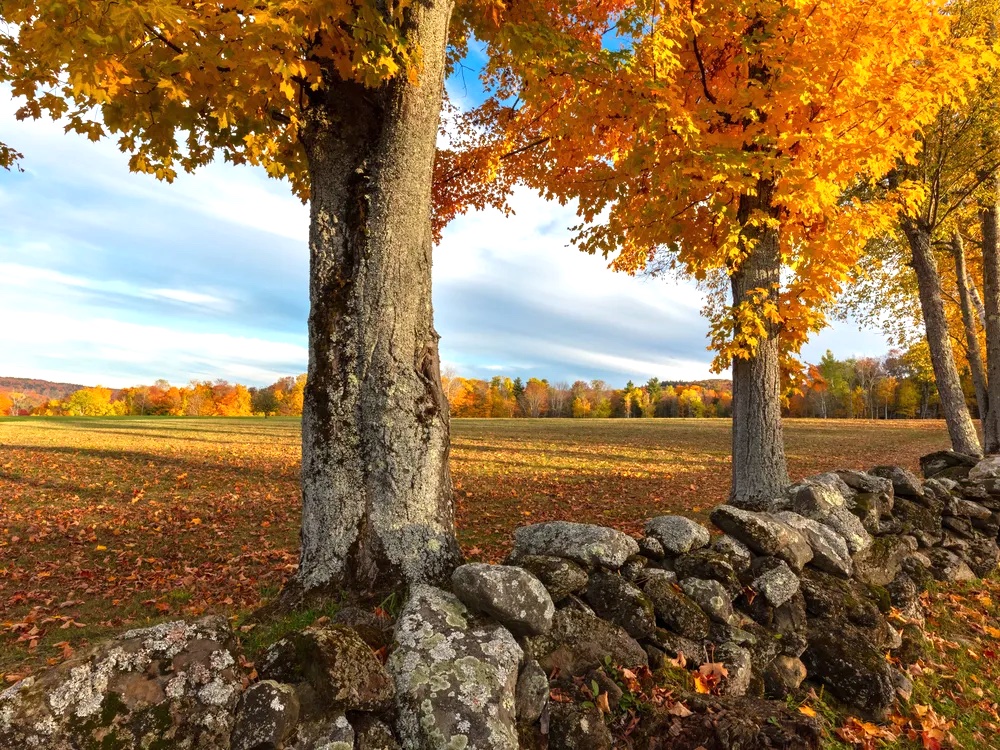
On November 14th, 2023, Smithsonian published an essay that has been slowly coming together for several years. “How Stone Walls Became a Signature Landform of New England” is bringing national attention to a regional phenomenon. It’s also bringing readers from literature, history, and science to the same proverbial page.
This essay is written in a style known as long-form journalism, in this case having nearly 3000 carefully chosen words and five stunning stock photos. In this genre, the writing moves back and forth between my own travels, Robert Frost’s poetry, facts about stone walls, New England history, and environmental issues, including climate change.
For readers lacking the patience to read such a long essay, or for those wanting help zooming in on something specific, I decided to write a “Cliffs Notes” version of the essay that extracts and abstracts its key ideas in the order in which they appear. All of these ideas are more fully explained in the text and supporting links. Consider them “talking points” for the larger cultural conversation we’re having about the appreciation, conservation, and investigation of stone walls, and how all this can be used to educate the rising generation of movers and shakers. For teachers, I hope that my pithy statements can be tweaked into learning objectives that could be taught outdoors in front of an old stone wall.
POETIC ICONS. Robert Frost’s poetry was perfectly timed to kick-start New England’s appreciation of stone walls, making them as valuable as cultural icons as they ever were as utilitarian fences. His meditations on them at his farm in Derry, NH became the core of all his writing.
GOOD FENCES? The building of barriers between human communities has always been a mixed blessing — a tradeoff between our evolved needs for territorial markers and for social openness. Do we need a clear line between us and them?
DETERMINISM. Statistically, New England’s walls are far more alike than they are different, given the deterministic forcings associated with the landscape history of bedrock creation, glacial action, the agricultural makeover, and subsequent reforestation. Natural, rather than cultural, factors account for most of the variation we see.
ORDER TO DISORDER. Absent human care, all walls are fated to disappear from the landscape because they are ordered structures in a world that naturally trends toward disorder. From low-entropy to high-entropy. Nature ‘wants them down” via chemical and physical weathering, the growing and falling of trees, the heaving of the ground by frost, and many other factors including seismic shaking. Nature also wants the stones more widely and randomly dispersed over the area of adjacent land and the volume of the soil.
CLIMATE CHANGE. New England, stone walls will likely fall apart faster in the warmer, wetter climate of modernity and future projections.
LITERARY LICENSE. Frost’s “Mending Wall,” the most famous stone wall in the U.S., is a poetic conflation of two actual walls on opposite sides of the parcel of land behind the barn at Frost’s Farm. The better-built stack of slabs to the west that requires little maintenance, and the tumbling row of cobbles and boulders to the east that requires constant maintenance.
HISTORIC TRANSITION. The early 20th century was a time of landscape transition, from smaller agricultural communities to larger industrial ones, from dirt to bituminous roads, from horses and oxen to automobiles and tractors, and from open to reforested parcels. Robert Frost capitalized on the cusp of change.
BINDING THREADS. As a consequence of the early 20th century transition, the walls originally built to divide agricultural properties became the binding threads of a new cultural identity emphasizing the region’s shared agrarian heritage.
SIGNATURE LANDFORM. Though nearly ubiquitous in New England, stone walls are only locally present elsewhere in the US owing to the requirement that three limiting factors be present: hard crystalline rock like granite and gneiss; glacial till subsoils; and a family farms in need of dense fencing.
MAPPING. New techniques involving LIDAR (Light Ranging and Detection), GIS (Geographic Information Systems) and AI (Artificial Intelligence) are accelerating progress in the mapping of New England’s estimated 240,000 miles of stone wall in New England.
STRIP MINING. The greater power of fossil fuels in the Anthropocene epoch has led to widespread destruction of many historic walls in New England for the purposes of commercial agriculture and for the strip-mining of stone for road sub-grade and suburban architecture.
HABITAT: The loss of stone walls is also the loss of a unique habitat, and therefore a loss of biodiversity. Ecologically, the “drylands” of stone walls are analogous to the “wetlands” of nearby floodplains, swamps, marshes, fens, and bogs. And their ecological effects extend beyond the lines of stone.
CONSERVATION: Ever so gradually, we are seeing a rise in legal frameworks and administrative policies devoted to the conservation and management of stone walls. The trend toward appreciation, protection, and education is gaining ground.